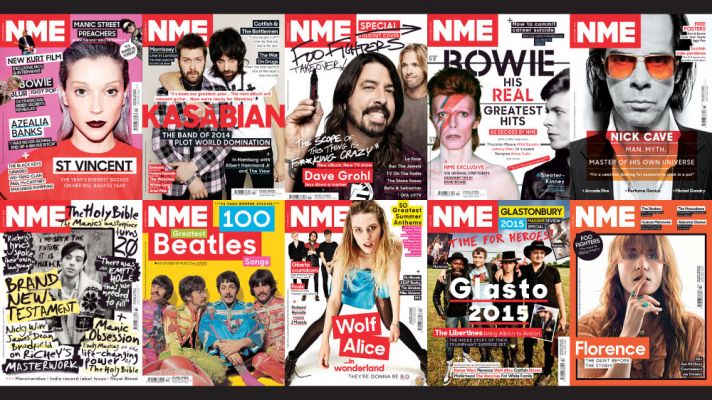Written by Jenna Dreisenstock
Image Credit: Paul Wetherell
As youngsters, one of the most exciting things for music-loving adolescents alike was opening the brand new edition of our favourite music print magazine: at a time where print was our main source of the latest news, interviews, articles, features and album announcements – the joy of flipping through the first few pages, with their freshly inked and manufactured scents blossoming through each turn, awaiting the next biggest announcements in eager anticipation. Fingertips embracing the page, the delicate flip as to not ruin or crumble the zine in case we could no longer read the article: the heartbreak of ripped pages, but the elation of free posters and stickers and mix CDs was like opening a brand new gift.
However, that is not necessarily the case anymore as print media is in steady decline. Fashion, food, politics and travel magazines still grace the shelves religiously: however the loss of pop-culture magazines focused, specifically, on topics such as art, photography and music of course, are disappearing just to name a few.
As someone who grew up with a love of magazine subscriptions, watching the type of print media I loved decline is rather gloomy. However, there are many mixed feelings regarding the subject from my own personal opinion, as well as those of others.
Perhaps the first example of this that comes to mind is the recent shutdown of famed music publication NME’s print magazine – the announcement that their print edition is coming to a close after 66 years left fans shaken, yet understanding. NME have spoken about the importance of spreading their digital platform, hence the shutdown. Financially, the abandonment of print makes sense in a couple of ways: with the expansion of a digital platform, the publication has a wider reach and of course – the articles are free. Anyone, at anytime, can find themselves on the net with all the latest music news at their fingertips. Paying for a print magazine as both a publication and a consumer isn’t necessarily cheap; and especially when our generation of millenials and Gen-Z-ers who are, essentially, mostly broke – buying a magazine for 30 pounds versus a free google search for all the interviews, reviews, new album releases and so on – it’s obvious who the winner is. In that sense, the consumer no longer really has a need to buy an actual print magazine, and therefore the publication suffers.
In 2017, The Guardian reported that despite print sales declining, there has however been a rise in certain types of magazines: specifically political magazines, in our current turbulent world climate – with the internet providing so much free access to information, false political information is easier to spread and this has been a thought on everyone’s minds. However, this is definitely not the same case in the culture and art worlds.
There are those who have been born into a time where the internet is something they can’t fathom living without – the world wide web experience in the early 2000s was very different to the ways in which we consume media now, in 2018. They perhaps may never know the experience of what it means to open up a brand new print magazine, flip eagerly through the pages; obsess over the newest mix CD, stick all the free posters up on the wall.
There are positives and negatives to the decline of print media in many way – my feelings remain mixed: the thought of not being able to hold a physical edition of the newest freshly inked culture magazine leaves me with a melancholia, as the sentimentality of physical collections is something I hold dear. However, the internet has changed the way in which we consume, and the decline does at the end of the day make sense – whether it be financially for publications and consumers, or the adaptation to an ever evolving technological world.





